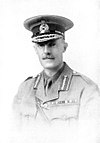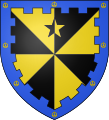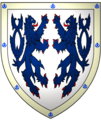
Duart Castle, or Caisteal Dhubhairt in Scottish Gaelic, is a castle on the Isle of Mull, beside the Sound of Mull off the west coast of Scotland, within the council area of Argyll and Bute. The castle dates back to the 13th century and is the seat of Clan MacLean. One source states that the castle was "brought back from ruin in 1911". The regimental colours of the WW1 Canadian Expeditionary Force 236th Battalion, CEF are laid up in the Great Hall.
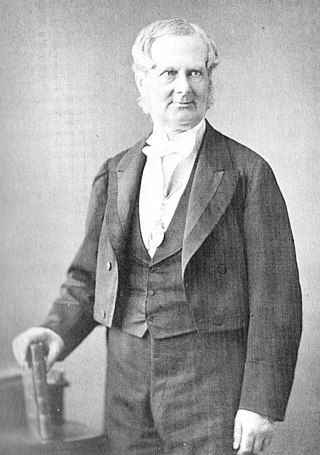
Sir John Bernard Burke, was a British genealogist and Ulster King of Arms, who helped publish Burke's Peerage.

Torosay Castle is a large house situated 1+1⁄2 miles south of Craignure, in the parish of Torosay, on the Isle of Mull, in the Scottish Inner Hebrides.
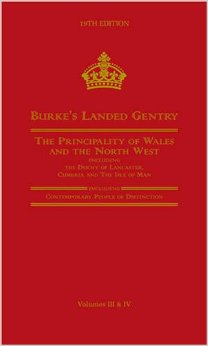
Burke's Landed Gentry is a reference work listing families in Great Britain and Ireland who have owned rural estates of some size. The work has been in existence from the first half of the 19th century, and was founded by John Burke. He and successors from the Burke family, and others since, have written in it on genealogy and heraldry relating to gentry families.

Clan Swinton is a Scottish clan of the Scottish Lowlands.
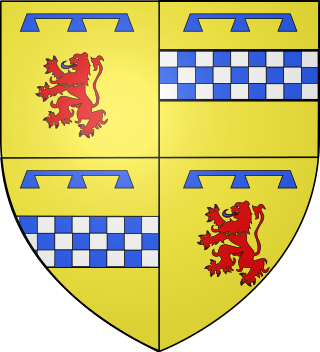
James Mor Stewart, called James the Fat, was the youngest son of Murdoch Stewart, Duke of Albany and Isabella of Lennox. When his father and brothers were executed by King James I for treason in 1425, James led a rebellion against the king, taking the town of Dumbarton and killing the keeper of Dumbarton Castle. His success was short lived and he soon fled to Ireland, where he would spend the remainder of his life in exile. A second attempt at rebellion in 1429 saw a fleet sail to Ireland to collect James "to convey him home that he might be king", but he died before the attempt could be made.
The High Sheriff of Tipperary was the Sovereign's judicial representative in County Tipperary. Initially an office for a lifetime, assigned by the Sovereign, the High Sheriff became annually appointed from the Provisions of Oxford in 1258. Besides his judicial importance, he had ceremonial and administrative functions and executed High Court Writs.

John Douglas Edward Henry Campbell, 7th Duke of Argyll,, known as Lord John Campbell until 1839, was a Scottish peer and Whig politician.
John Burke was an Irish genealogist, and the original publisher of Burke's Peerage. He was the father of Sir Bernard Burke, a British officer of arms and genealogist.
Walter Campbell, 3rd of Shawfield and Islay and 9th of Skipness was a Scottish landowner, advocate and Rector of Glasgow University.

Colonel Alexander Campbell of Possil (1754–1849) entered the army as an ensign in the 42nd Regiment in April 1769, and obtained a lieutenancy in the 2nd Battalion Royals the following year in Menorca.

The Douglases of Mains are a branch of the Clan Douglas, related to the Lords of Douglas through Archibald I, Lord of Douglas. The first Laird obtained land through marriage into the Galbraith family, which had been granted land in New Kilpatrick by Maldowen, Earl of Lennox. The family produced minor nobles in the Scottish court, perhaps the most notable of which was Malcolm Douglas, the 8th Laird, executed for treason in Edinburgh for conspiracy in the Raid of Ruthven. His second son, Robert Douglas, was made Viscount of Belhaven and is buried in Holyrood Abbey. The family intermarried in the Glasgow area, having links with the Campbells of Blythswood, with landed families across Scotland and more latterly the United Kingdom. The title became extinct in the 20th century; the last 33+1⁄2 acres of the estate was sold to Dunbartonshire county and was subsequently used for the erection of the secondary school, Douglas Academy, in Milngavie prior to the death of the last heir in 1977.
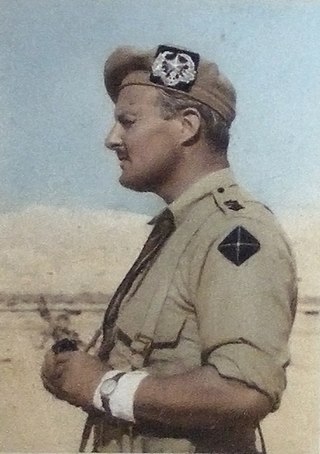
Lieutenant Colonel Duncan Maclachlan Carter-Campbell of Possil OBE, son of Major-General George Tupper Campbell Carter-Campbell C.B., D.S.O, was a British Army Colonel during the 1950s.

Colonel John Cameron of Fassiefern (1771–1815) of Fassiefern, Inverness-shire, was a celebrated Scottish military commander of the Napoleonic wars. He was a cousin of the Camerons of Lochiel.

Colonel Thomas Tupper Carter-Campbell of Possil was a British soldier.
Most prime ministers of the United Kingdom have enjoyed the right to display coats of arms and to this day, prime ministers have their ancestral arms approved, or new armorial bearings granted, either by the College of Arms or the Lyon Court.
Blayney Townley-Balfour was an Irish politician and member of the Protestant Ascendancy.
Lorenzo Moore (1744–1798) was a British Cavalry officer and a Member of the Irish Parliament for the constituency of Dungannon.
Arthur Henry Johnstone-Douglas JP DL was a Scottish soldier and politician.

Hugh Rose, 16th Baron of Kilravock (1684-1755) was a Member of Parliament for Ross-shire and Chief of Clan Rose. The eldest son of Hugh Rose, 15th of Kilravock, he inherited his father's estates and the Clan Chiefdom on his father's death in 1732.




